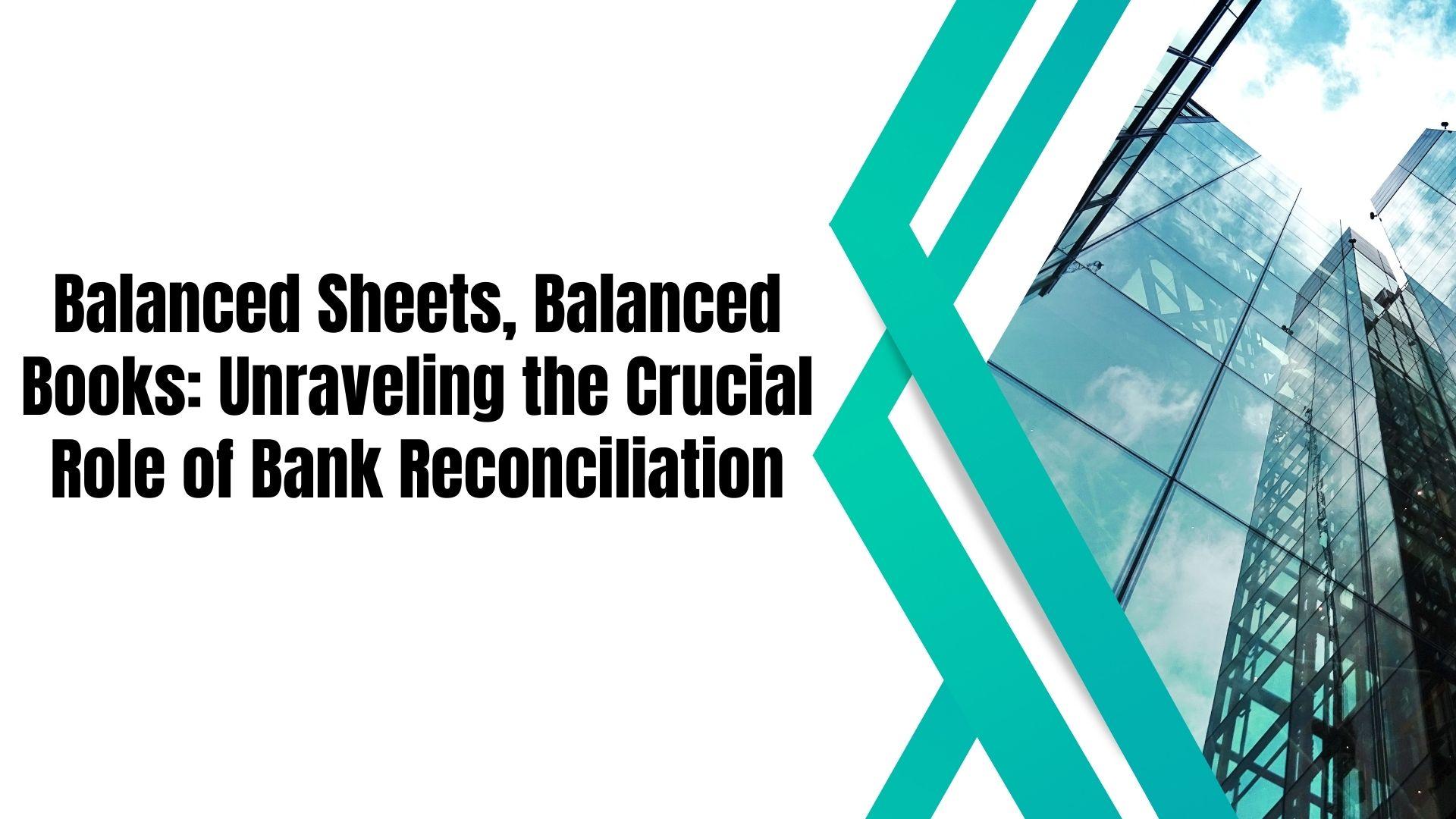Introduction:
In the intricate world of finance, where numbers dance and transactions weave a complex tapestry, achieving financial equilibrium is a paramount goal. One indispensable tool in this pursuit is the often overlooked but crucial process of bank reconciliation. In this comprehensive exploration, we delve into the significance of balanced sheets and books, uncovering the pivotal role that bank reconciliation plays in maintaining financial harmony.
Decoding Bank Reconciliation:
At its core, bank reconciliation is the process of matching the transactions recorded in a company’s books with those reflected in its bank statement. The goal is to identify discrepancies, rectify errors, and ensure that the financial records accurately mirror the reality of a business’s financial position.
Why It Matters:
Accuracy and Integrity:
Bank reconciliation serves as the linchpin for ensuring the accuracy and integrity of financial records. Discrepancies can arise from various sources such as errors in recording, bank processing delays, or even fraudulent activities. Resolving these differences promptly is essential to present a true and reliable financial picture.
Cash Flow Management:
Effective cash flow management is contingent on the precise alignment of internal records with external bank statements. Bank reconciliation enables businesses to monitor their liquidity, identify outstanding transactions, and make informed decisions about expenditures, investments, and financial planning.
The Process Unveiled:
Gathering Data:
Initiating the bank reconciliation process involves collecting the necessary data – bank statements, cash receipts, and disbursement records. This step lays the foundation for the subsequent comparison of entries.
Matching Transactions:
The heart of bank reconciliation lies in meticulously matching each entry in the company’s records with the corresponding transaction on the bank statement. This not only includes regular transactions but also takes into account outstanding checks, deposits, and any bank fees.
Identifying Discrepancies:
Discrepancies may surface during the matching process, ranging from timing differences to errors in data entry. These disparities must be meticulously scrutinized, with each discrepancy being traced back to its source for corrective action.
Benefits Beyond Balancing:
Fraud Detection:
Bank reconciliations acts as a potent tool in detecting fraudulent activities. Discrepancies that cannot be explained by timing differences or clerical errors may be indicative of fraudulent transactions, prompting further investigation.
Financial Reporting Compliance:
Accurate financial reporting is not only a best practice but is often a regulatory requirement. Bank reconciliation ensures compliance with accounting standards and provides a solid foundation for audit trails.
Challenges and Solutions:
Timeliness:
Delays in reconciling bank statements can hinder the timely identification and resolution of discrepancies. Establishing a regular and efficient reconciliation schedule is paramount to overcoming this challenge.
Automation and Technology:
Leveraging automation and technology tools can streamline the bank reconciliation process, reducing the likelihood of human error and expediting the identification and resolution of discrepancies.
Note: Get Tally to Whatsapp Service Easily Through tallykonnect.com
Conclusion:
In the intricate dance of financial management, bank reconciliations emerges as the choreographer, ensuring that the numbers align seamlessly, and the financial story told is one of accuracy, transparency, and compliance. As businesses navigate the complex terrain of finance, the role of balanced sheets and books, orchestrated through the artful practice of bank reconciliation, cannot be overstated. It is not merely a task on a checklist; it is the guardian of financial equilibrium in the ever-evolving world of commerce.
